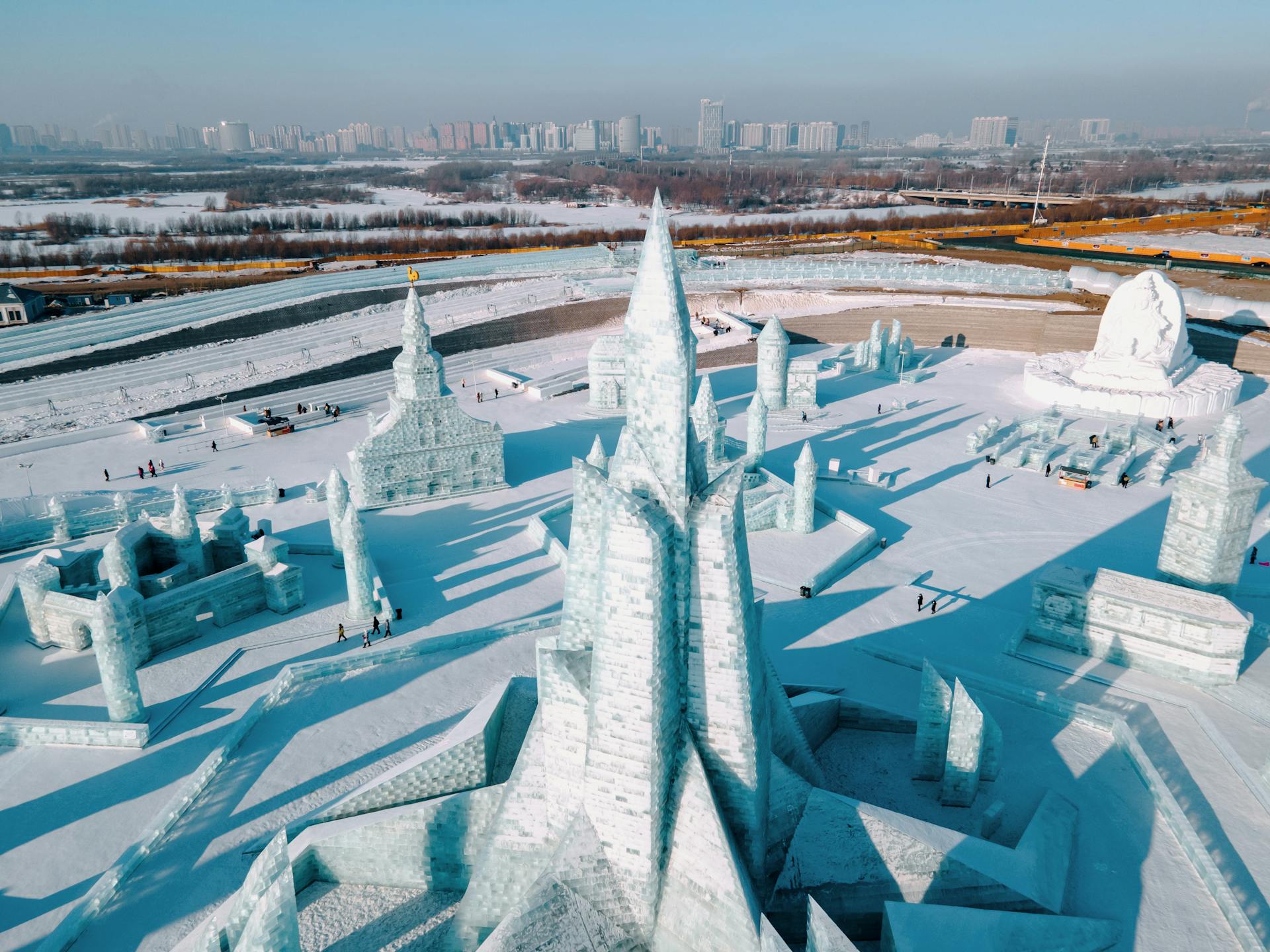In a world rich with diversity, cultural festivals serve as vibrant celebrations that encapsulate the essence of human experience. From the colorful splashes of color during India’s Holi to the rhythmic samba beats echoing through the streets of Rio de Janeiro during Carnival, these festivals are not merely events; they are living expressions of heritage and identity.
Cultural festivals are gatherings that showcase the traditions, beliefs, and customs of various communities, allowing people to connect with their roots and share their unique narratives. They play a crucial role in preserving cultural heritage, fostering a sense of belonging, and enhancing community ties. By participating in these events, individuals not only celebrate their history but also promote cultural exchange and understanding among diverse populations.
This article invites you on a journey around the globe, exploring some of the most unique cultural festivals that highlight the incredible diversity of human expression. From ancient rituals to contemporary celebrations, each festival offers a glimpse into the rich tapestry of cultures that make up our world today. Join us as we delve into the fascinating stories, traditions, and significance behind these remarkable festivities.
The Significance of Cultural Festivals
Cultural festivals are vital for preserving the rich tapestry of human heritage and educating both participants and spectators. They serve as a living archive, showcasing age-old traditions, rituals, and artistic expressions that define a community’s identity. Through storytelling, music, dance, and art, these festivals impart knowledge and foster appreciation for cultural diversity among people of all backgrounds. They create an opportunity for individuals to immerse themselves in different cultures, promoting empathy and understanding in an increasingly globalized world.
The economic benefits of cultural festivals are equally significant. They attract tourists, which in turn generates income for local businesses, artisans, and vendors. This influx of visitors not only boosts the economy but also helps sustain local crafts and traditions, ensuring they are passed down through generations. Festivals often create jobs and provide a platform for local artists and performers to showcase their talents, fostering community pride and engagement.
Moreover, cultural festivals promote cultural exchange, bridging gaps between different communities. They invite individuals to experience the customs and practices of others, creating a space for dialogue and connection. As people come together to celebrate their differences, they also find common ground, enriching their understanding of what it means to be part of a global society.
Notable Unique Cultural Festivals
A. Diwali (India)
Diwali, often referred to as the Festival of Lights, is one of the most significant festivals in India, celebrated by millions across the globe. It symbolizes the triumph of light over darkness and good over evil, rooted in ancient Hindu mythology. The festival lasts five days and culminates with the new moon, marking a time for families to come together, reflect, and renew their spirits.
Key traditions during Diwali include lighting oil lamps, decorating homes with colorful rangoli (designs made from colored powders), and exchanging gifts and sweets among friends and family. Fireworks illuminate the night sky, and prayers are offered to Goddess Lakshmi, the deity of wealth and prosperity. A unique custom associated with Diwali is the practice of giving back to the community, as many engage in charity and service during this auspicious time.
B. La Tomatina (Spain)
La Tomatina, held annually in the town of Buñol, Spain, is a quirky festival that has garnered international fame for its exhilarating tomato fight. Originating in 1945 during a local festival, a food fight broke out among participants, leading to the spontaneous tradition of throwing ripe tomatoes at each other.
Today, thousands gather for the event, donning old clothes and preparing for a day of fun and laughter. Participants engage in a friendly tomato battle, with trucks delivering fresh tomatoes to the square. The cultural significance behind La Tomatina lies in its ability to unite people in joy and silliness, transcending language and cultural barriers while providing a unique platform for expression and community bonding.
C. Carnival (Brazil)
Carnival in Brazil is a riot of color, music, and exuberance, with roots dating back to the early 18th century. This grand festival marks the beginning of Lent and has evolved into a spectacular celebration of Brazilian culture, drawing millions of participants and spectators each year.
At the heart of Carnival are the parades featuring samba schools, which showcase intricate floats, vibrant costumes, and electrifying dance performances. The infectious rhythms of samba fill the streets, inviting everyone to join in the festivities. Carnival’s impact on Brazilian culture is profound; it fosters national pride, celebrates diversity, and brings together people from all walks of life, reflecting the rich mosaic that defines Brazil.
D. Holi (India)
Holi, known as the Festival of Colors, is celebrated with great enthusiasm in India and among Indian communities worldwide. This vibrant festival marks the arrival of spring and signifies the victory of good over evil, celebrated through the playful throwing of colored powders and water.
During Holi, people gather in streets, parks, and homes to celebrate with music, dance, and delicious food. The atmosphere is electric, filled with laughter and joyous revelry. Beyond the colors and festivities, Holi carries a profound message of love, forgiveness, and unity, encouraging individuals to let go of past grievances and embrace new beginnings.
E. Oktoberfest (Germany)
Oktoberfest, held annually in Munich, Germany, is the world’s largest beer festival, attracting millions from around the globe. Its origins date back to 1810, when a royal wedding celebration transformed into a beloved public festival.
The festival features massive beer tents, traditional Bavarian cuisine, and lively music, creating a festive atmosphere that encourages communal enjoyment. Visitors indulge in hearty dishes like pretzels, sausages, and roasted chicken, accompanied by the finest German beers. Oktoberfest has become a cultural hallmark for Bavaria and a symbol of German hospitality, showcasing the region’s rich traditions and bringing people together to celebrate.
F. Harbin International Ice and Snow Sculpture Festival (China)
The Harbin International Ice and Snow Sculpture Festival, held annually in Harbin, China, is a breathtaking display of artistry and creativity. Established in 1963 and re-launched in 1985, it has grown to become one of the largest ice and snow festivals in the world.
Visitors marvel at intricate sculptures carved from massive ice blocks, illuminated by colorful lights that transform the winter landscape into a dazzling wonderland. Activities include ice skating, snowboarding, and exploring themed ice castles, making it a winter paradise for locals and tourists alike. The festival not only promotes tourism but also highlights the local culture and craftsmanship, as artisans showcase their skills in this stunning medium.
G. Songkran (Thailand)
Songkran, the traditional Thai New Year festival, is a joyous celebration marked by water fights and spiritual rituals. Taking place in mid-April, it signifies renewal and the washing away of sins and bad luck.
During Songkran, participants engage in playful water battles using water guns, buckets, and hoses, symbolizing the cleansing of the soul. Traditional customs include visiting temples to pay respects to Buddha and pouring water over the hands of elders as a sign of respect and gratitude. The importance of Songkran in Thai culture lies not only in its festive spirit but also in its emphasis on family values, respect for tradition, and the joy of togetherness.
Festivals That Celebrate Nature
A. Cherry Blossom Festival (Japan)
The Cherry Blossom Festival, or Hanami, is a cherished tradition in Japan that celebrates the ephemeral beauty of cherry blossoms. As spring approaches, parks and streets are adorned with blooming cherry trees, attracting locals and tourists alike who gather for picnics and celebrations beneath the blossoms.
This festival holds deep cultural significance, symbolizing the transient nature of life and the beauty found in fleeting moments. Visitors enjoy traditional Japanese foods and partake in cultural activities such as tea ceremonies and poetry readings, all while reveling in the stunning scenery. Hanami serves as a reminder to appreciate nature’s beauty and the importance of community.
B. Day of the Dead (Mexico)
The Day of the Dead, or Día de los Muertos, is a vibrant Mexican holiday honoring deceased loved ones. Rooted in ancient indigenous traditions, this celebration takes place on November 1st and 2nd, coinciding with the Catholic observance of All Saints’ Day and All Souls’ Day.
Families create altars adorned with photographs, candles, and offerings of food to welcome the spirits of their departed. Colorful decorations, sugar skulls, and marigolds fill homes and cemeteries, transforming them into lively spaces of remembrance. The cultural significance of Día de los Muertos lies in its unique approach to death, emphasizing joy and remembrance rather than mourning, fostering a deep connection between the living and the departed.
Conclusion
Cultural festivals play an essential role in global society, serving as vibrant celebrations of heritage, community, and human connection. They remind us of our shared values and diversity, offering opportunities to appreciate and experience different cultures. Through the lens of these unique festivals, we can gain insights into the beauty of human expression and the importance of preserving our cultural identities.
As we celebrate these remarkable traditions, we invite readers to reflect on their own experiences with cultural festivals. Share your stories and discover the rich tapestry of global cultures that continue to thrive through these extraordinary celebrations.
Frequently Asked Questions
1. What are cultural festivals?
Cultural festivals are public celebrations that showcase the traditions, customs, and artistic expressions of specific communities or cultures. They often include music, dance, food, and various activities that reflect the heritage and identity of the people involved.
2. Why are cultural festivals important?
Cultural festivals play a vital role in preserving cultural heritage, promoting community identity, and fostering understanding among different cultures. They also provide economic benefits by attracting tourism and supporting local businesses and artisans.
3. How can I participate in cultural festivals around the world?
Participation in cultural festivals varies by event. Many festivals welcome tourists and locals alike to join in the celebrations, while some may require advance registration or tickets. It’s best to research specific festivals to understand their rules and customs.
4. Are cultural festivals family-friendly?
Many cultural festivals are designed to be family-friendly, offering activities for people of all ages. Events often include music, dance performances, food stalls, and interactive exhibits that can be enjoyed by everyone in the family.
5. How can cultural festivals promote understanding between different cultures?
Cultural festivals create a space for people from diverse backgrounds to come together and share their customs, traditions, and experiences. This interaction fosters dialogue, dispels stereotypes, and encourages mutual respect and understanding among different cultures.
6. Can I find cultural festivals in my local area?
Yes! Many cities and towns host cultural festivals throughout the year that celebrate local heritage, food, music, and traditions. Check local community calendars or cultural organizations for upcoming events in your area.
7. What should I wear to a cultural festival?
Dress codes vary depending on the festival and culture. It’s often a good idea to wear comfortable clothing that suits the weather and activities. If the festival has specific cultural attire, consider wearing traditional clothing as a sign of respect.
8. How can I learn more about the cultural significance of a festival?
To learn more about a specific festival’s cultural significance, research its history, traditions, and customs. You can also participate in workshops or community events, read articles or books, and engage with people from that culture for firsthand insights.


